During Eclipses, Astronomers Try to Reveal the Secrets of the Solar Wind
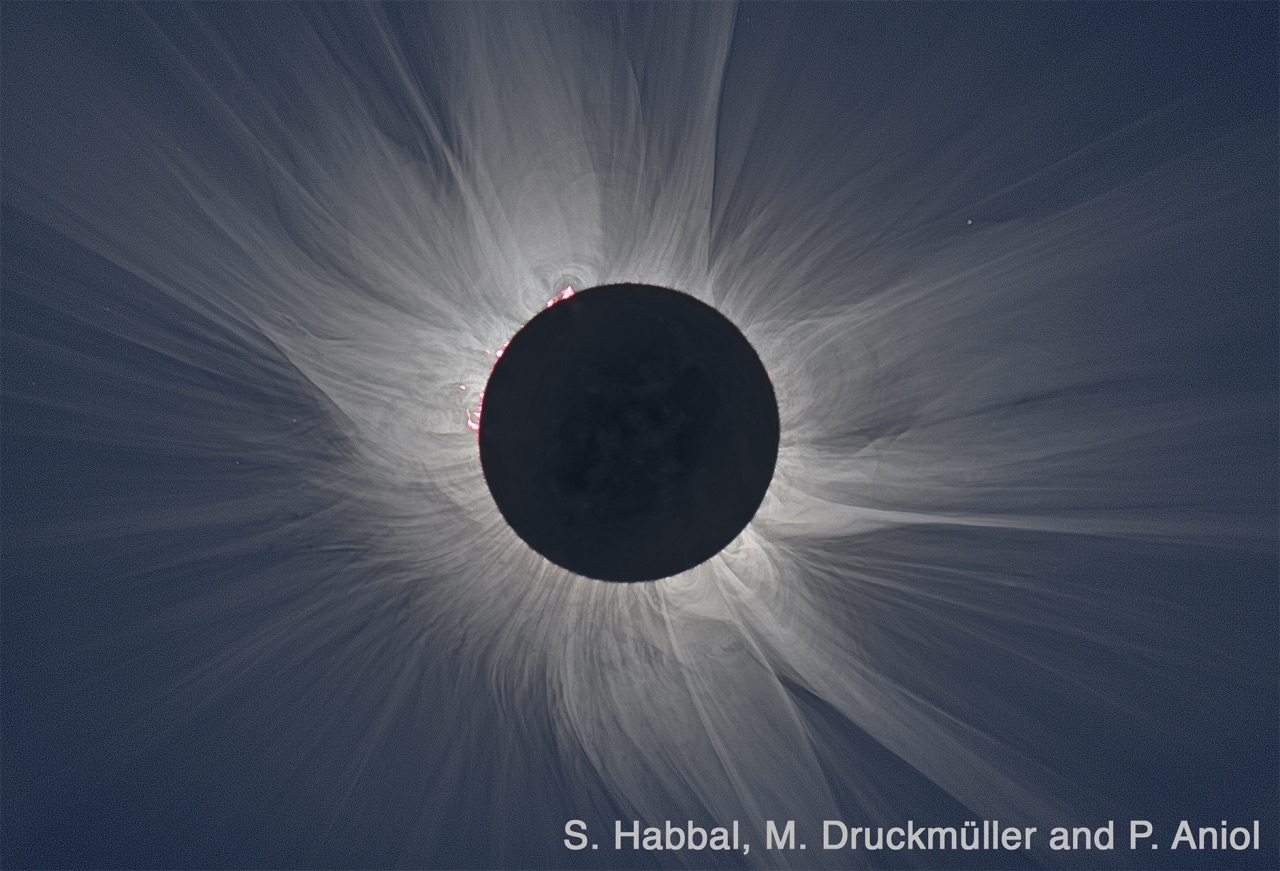
Shadia Habbal has been on a bit of a losing streak.
In 2012, Habbal, an astronomer and professor at the University of Hawaii, traveled to northern Australia to witness a total solar eclipse, when the moon completely covers the face of the sun. During those few brief moments when the solar disk completely disappears behind its lunar companion, a portion of the Earth becomes cloaked in shadow, and jets of hot gas in the sun's typically invisible atmosphere are revealed to skywatchers. It's considered one of the most stunning natural phenomena that can be seen with the naked eye.
But in 2012, Habbal's view of that beautiful sight was blocked by clouds. The same thing happened in 2013, when she traveled to Kenya in hopes of witnessing another total solar eclipse. Habbal had a clear view of the eclipse in 2015 from Svalbard (a Norwegian archipelago north of the Arctic Circle), but her view was clouded out again for an eclipse in Indonesia in 2016.
"We're hoping that doesn't happen in 2017," Habbal told Space.com, referring to the total solar eclipse that will be visible only from the U.S., along a path stretching from Oregon to South Carolina, on Aug. 21. [Total Solar Eclipse 2017: When, Where and How to See It (Safely )]
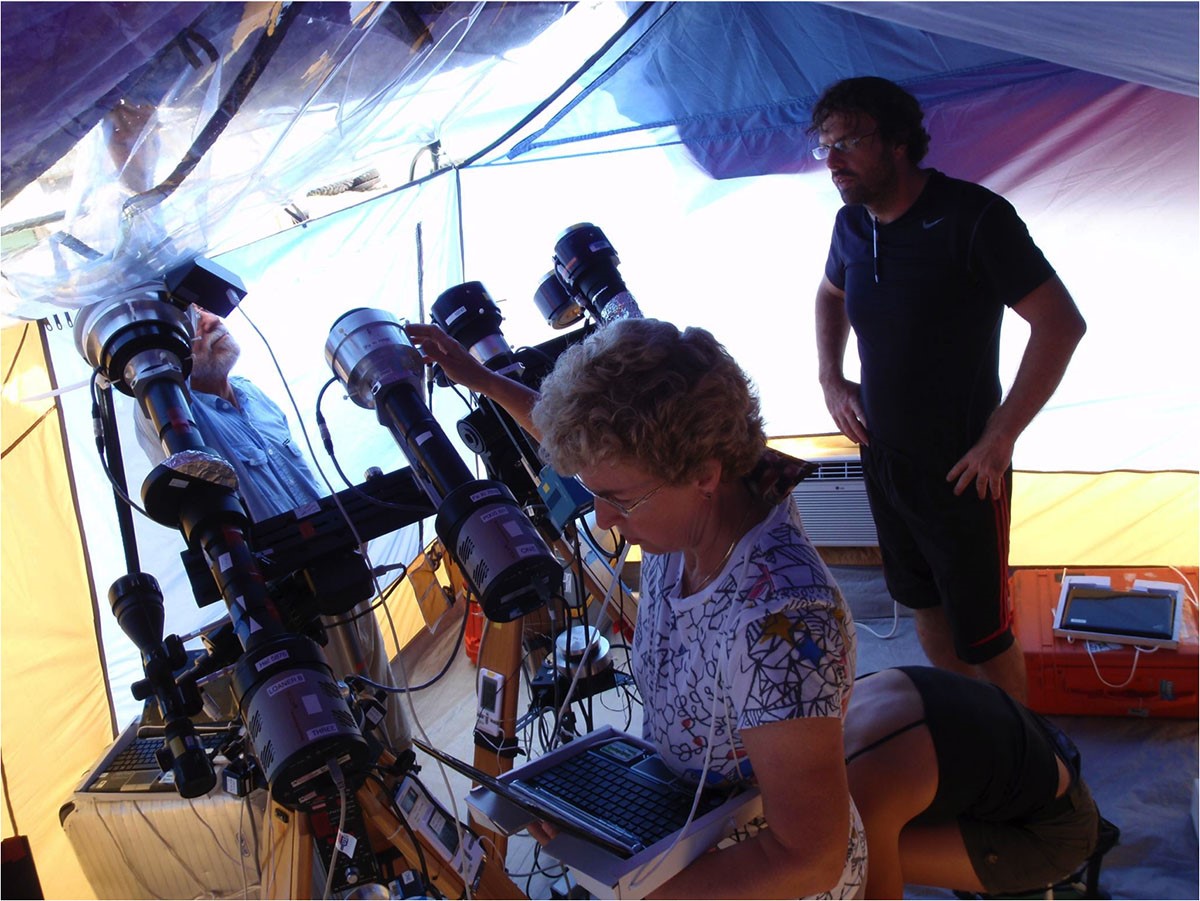
No one enjoys it when the weather ruins their day, but when Habbal misses a total solar eclipse, she loses more than a great experience. As an astronomer at the University of Hawaii, she studies the solar wind — a stream of particles that flows off the surface of the sun as both a consistent, gentle breeze and through violent eruptions that spit clouds of material into space. During a total solar eclipse, scientists get the clearest view possible of the sun's lower atmosphere, called the corona, where the solar wind emerges from the sun's surface, Habbal said.
"With a total solar eclipse, you can start your observations from the solar surface all the way out to several times the radius of the sun," Habbal said.
Total solar eclipses are the only way to directly study the emergence of the solar wind from the sun's surface, Habbal said. Attempts to replicate eclipses with human-made instruments either cannot capture all the wavelengths of light that are present, or cannot reveal the area immediately above the sun's surface. For Habbal and her colleagues, total solar eclipses provide the lifeblood of their research.
Breaking space news, the latest updates on rocket launches, skywatching events and more!
Avoiding solar disaster
The sun is the fundamental source of energy for most life on Earth, but it also poses a major threat to modern society. Explosions of material in the sun's atmosphere can send massive clouds of energetic particles hurtling toward Earth, where they may collide with and damage the electronics systems inside satellites. In the 21st century, this has the potential to cripple the communications networks that influence everything from individual mobile-phone service to the global economy.
These explosions of material, called coronal mass ejections (CMEs), can also send charged particles racing down Earth's magnetic-field lines to the planet's surface, where they could surge through power grids, causing serious damage that could take weeks or months to repair. In 1989, a CME cut off power to the entire province of Quebec, and it took 12 hours to restore power. Other parts of North America reported more than 2,000 grid problems that day as well, but other countries including the U.S. avoided a massive blackout. A large enough CME could cut off power to an entire continent for weeks or longer, some experts have said.
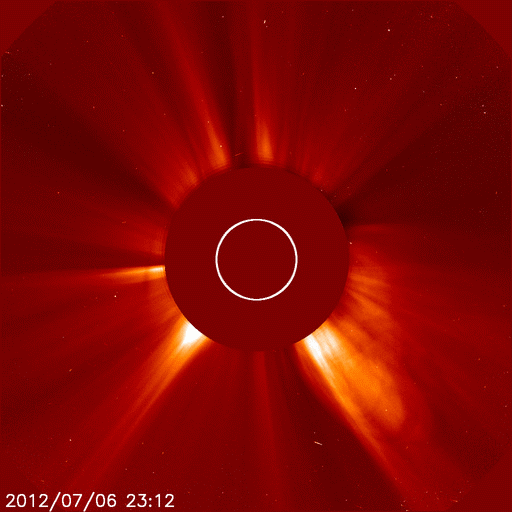
Just as improved weather forecasting on Earth helps save lives during tornadoes or hurricanes, solar scientists like Habbal hope that studying the sun will help them better predict solar weather events and potentially save humanity from a devastating solar disaster. But a total solar eclipse is the only time when she can get the data that could be crucial to understanding how CMEs form, and what features of the sun might signal their potentially disastrous arrival.
Timing is crucial
Total solar eclipses occur somewhere on Earth only about every 18 months, on average. But unfortunately for would-be observers, these spectacular celestial events don't always happen over places that are easily accessible to humans. Plus, during a total solar eclipse, the moon can only completely cover the face of the sun for a maximum of 7 minutes (this is dictated by the size of the objects and how they move relative to each other), but more often, totality lasts only about 3 or 4 minutes.
With those factors considered, if Habbal and her colleagues could be present for every total solar eclipse on Earth and were never clouded out, they could hope to collect about an hour's worth of data in 10 years.
That might not seem like much, but Habbal said there's a tremendous amount to be learned from just a few minutes of observing a total solar eclipse. She and her colleagues can squeeze information out of a single eclipse for years, or combine it with data from subsequent eclipses and gain more insight.
"This is what's so amazing about eclipses — every eclipse, or [even just an] eclipse image, has given us new discoveries about the sun," Habbal told Space.com. "Even if you have only a few seconds or a few minutes of totality, you can get something new."
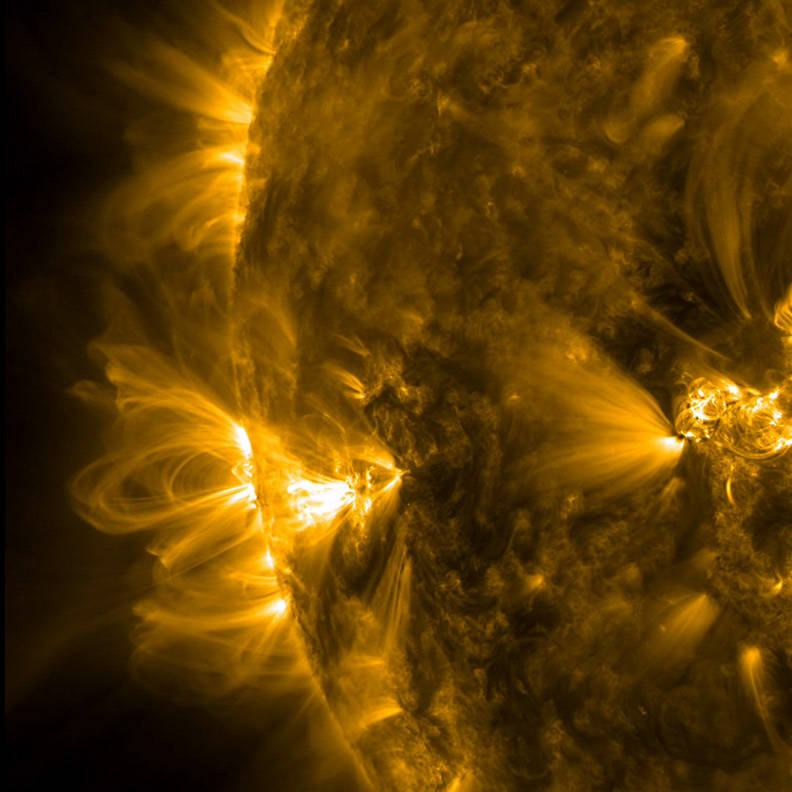
Take, for example, the total solar eclipse of 1869, when astronomers took a chemical profile of the outer region of the sun's atmosphere called the corona. The results indicated the presence of a chemical element that the scientists had never seen before and weren't able to identify for 70 years. It turned out to be atoms of iron that had been heated to such an extreme temperature that 13 of their 26 electrons had been emancipated.
"What it meant was that the temperature of the corona was more than 2 million [kelvins]," or about 3.6 million degrees Fahrenheit or 1.9 million degrees Celsius, Habbal said.
The sun, of course, is very hot — its core is estimated to reach peak temperatures of around 27 million degrees F (15 million degrees C). Things cool down farther away from the core. The "surface" of the sun — or the deepest layer that humans can directly observe, called the photosphere — is about 6,700 to 11,000 degrees F (3,700 to 6,200 degrees C).
But outside the photosphere, things start to work in reverse. The first layer of the sun's atmosphere, called the chromosphere, gets hotter the farther out it goes, reaching 14,000 degrees F (7,700 degrees C) at the top. Then, things get really weird — the next layer of the atmosphere, the corona, reaches temperatures that peak above 3.5 million degrees F (2 million degrees C) — or 200 to 300 times hotter than the sun's surface. Imagine if you started a bonfire and found that the air around the fire were 200 to 300 times hotter than the flames or the logs. What mechanism could explain that?
Scientists don't yet fully know the mechanism that's responsible for this temperature disparity in the sun, but they first learned about it by studying a total solar eclipse.
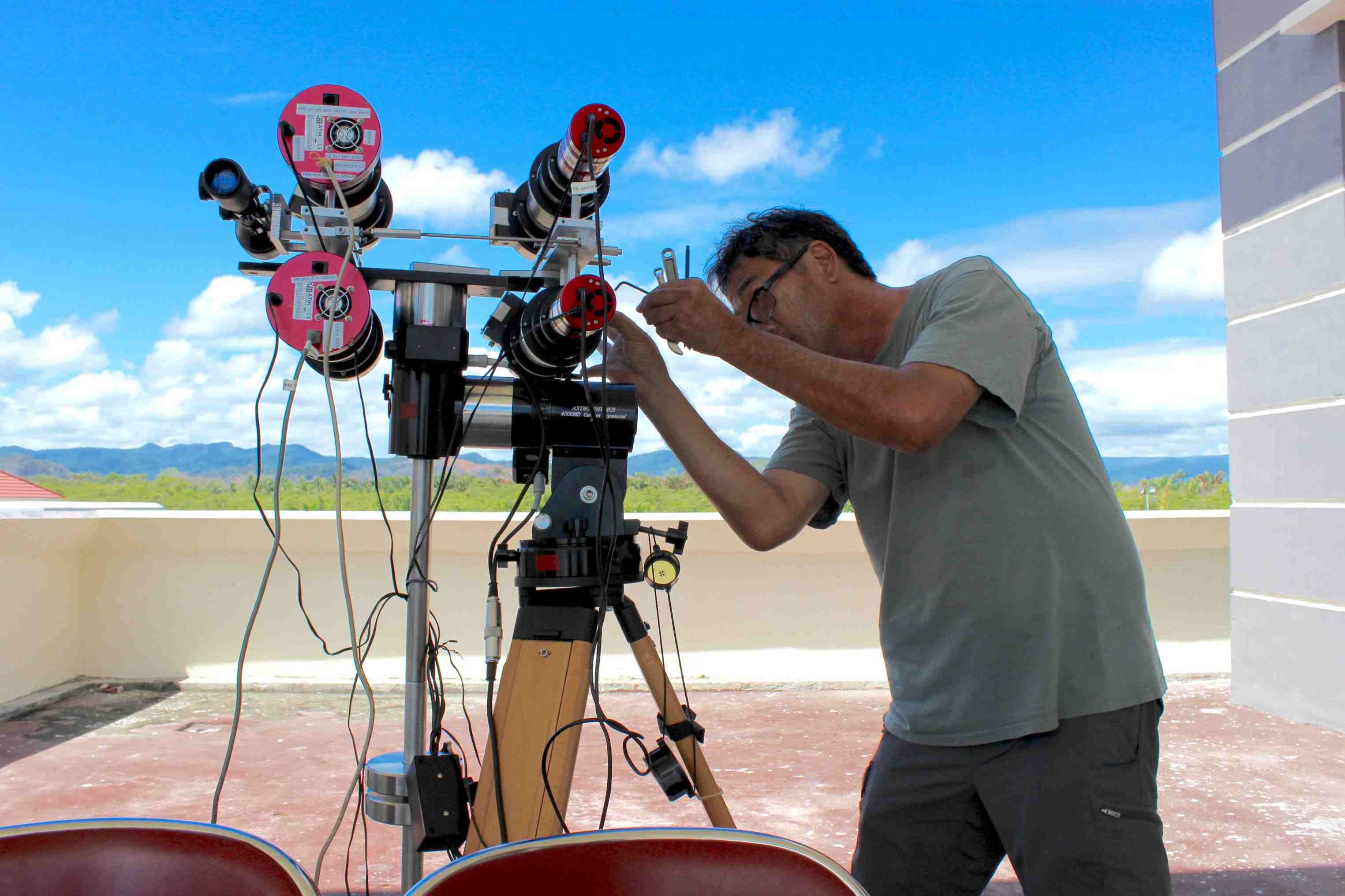
Following the heat
Habbal and her colleagues are also looking for iron atoms with 13 missing electrons (or iron 13) in the sun's atmosphere, as well as iron 10 (which has 10 electrons), and atoms of nickel, argon, calcium, oxygen and other atoms with missing electrons. (These types of atoms are called ions.) The presence of a particular type of ion with a certain number of missing electrons can help reveal the temperature of a given area. Often, these ions maintain their "temperature identity" even as they move into different regions, which means they can help scientists trace the transfer of heat and material throughout the sun and its atmosphere. Understanding how heat and energy move between the body of the sun and its atmosphere is crucial to cracking the mystery of the ultrahot corona. It could also reveal hints about when an explosive CME might occur in the atmosphere, scientists have said.
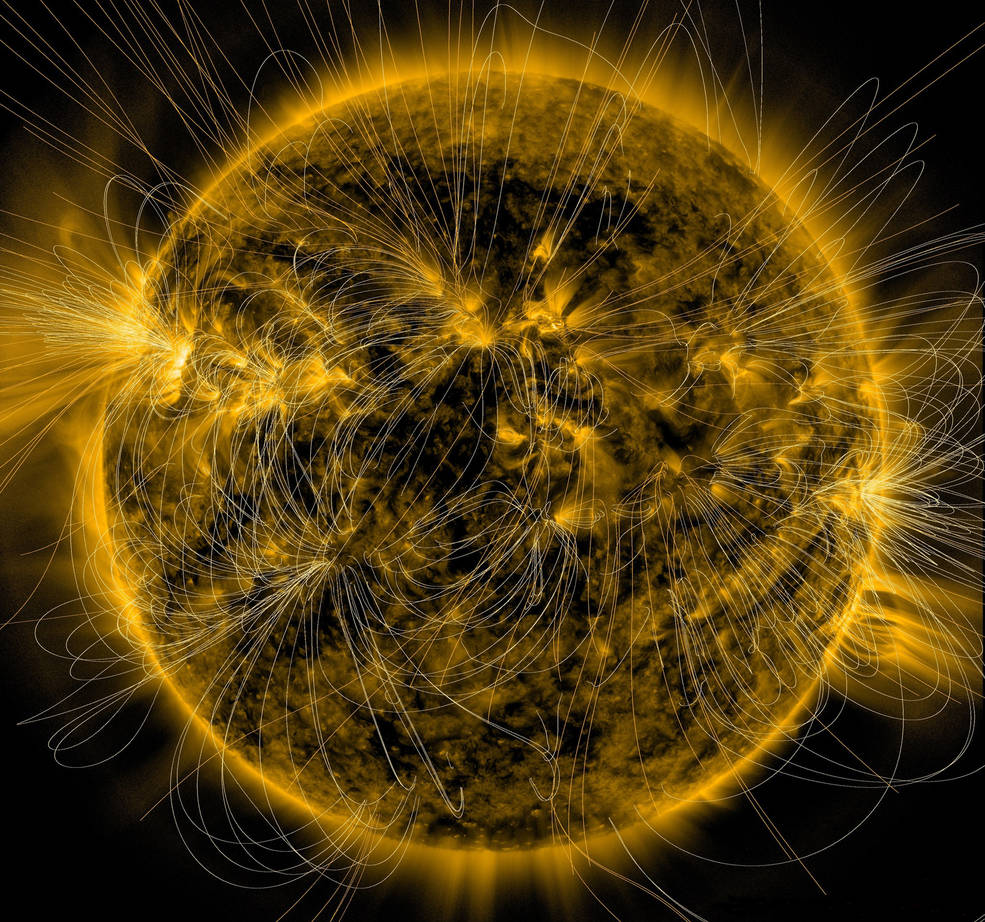
A CME refers to the cloud of charged particles and heat spewed into space from the sun's surface, but these explosions are created by the sun's magnetic field. If you've ever placed iron filaments near a magnet, you've seen the presence of magnetic field lines, which are responsible for the magnets can attract and repel each other. With a simple bar magnet, the field lines are neat and symmetrical, but on the sun, these invisible field lines are twisted and turbulent. They get tangled up in so-called "flux ropes," which can create loops of material on the surface of the sun called prominences. If those prominences snap, they can set off a CME.
During a total solar eclipse in March 2015 (seen from Svalbard), Habbal and her colleagues observed the cloud of material created by a CME moving out into space, away from the sun. What they found was that this bubble of ultrahot material from the corona contained a core of cooler material from the prominence that preceded it, like a reverse molten-lava cake. Habbal said no one had ever observed something like that before.
"What's curious, from a physics point of view, is that you have this very cool material — 100 times cooler than the coronal material — and it doesn't seem to care about the hot material, and it just keeps its identity as it flies away," Habbal said.
That discovery has provided another piece to the puzzle of how heat and energy move around in this environment. But Habbal and her colleagues think they've come across an even bigger discovery by combining eclipse observations over a decade.
Solar activity refers to the number of CMEs exploding on the sun's surface, along with bright explosions of light called solar flares. Solar activity increases and decreases on an 11-year cycle, and that cycle is also reflected in the number of sunspots on the sun's surface. Sunspots are dark blotches (visible with solar viewing glasses) of relatively "cool" material that form in places where bundles of magnetic-field lines burst through the photosphere. While an increase number of sunspots is associated with an increase in solar activity, sunspots aren't necessarily a direct indicator of where the explosions will come from, or when.
Habbal and her colleagues have found a direct correlation between prominences and "streamers" — regions where the corona is hottest — in the sun's corona. It seems the relatively cool prominences are pushing on the corona and have an impact on the temperature, they said.
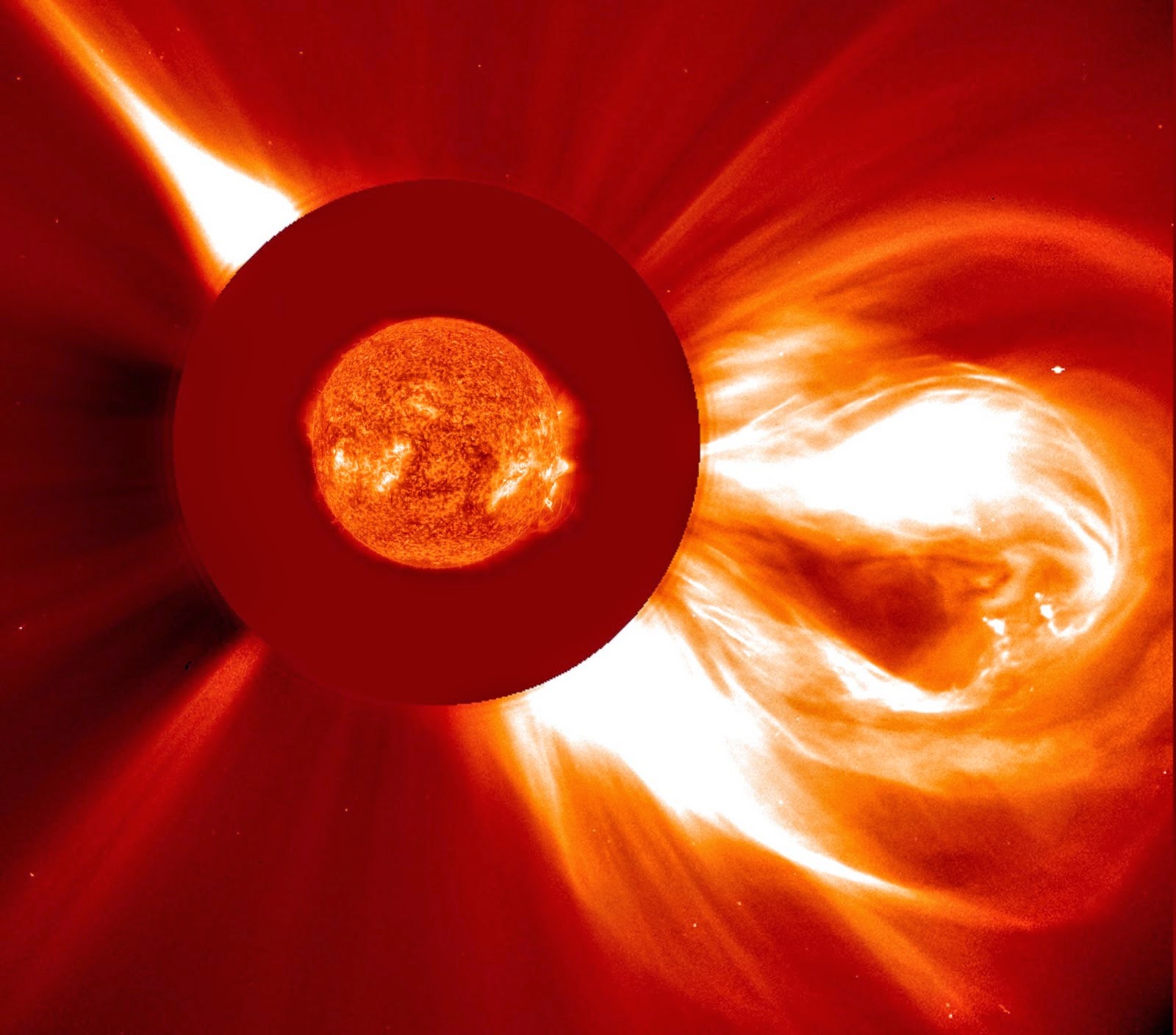
The observations that have revealed these insights could only come from total solar eclipses, and there is no artificial means of blocking the sun's light as effectively as a natural eclipse does. Instruments called coronagraphs attempt this, but they do not reveal the atmosphere all the way down to the sun's surface. In addition, a coronagraph is obviously much, much smaller than the moon and thus does not block nearly as much of the light from the disk of the sun. The solar atmosphere also radiates in the same wavelength range as the photosphere, so different wavelength filters don't help.
There is still work to be done to solve the puzzle of the corona's scorching temperature, and scientists still can't predict exactly where CMEs will arise. But these insights provide another clue about this complicated transfer of heat around a star 92.95 million miles (149 million kilometers) away that can both support and destroy life.
So for the 2017 total solar eclipse, Habbal and her colleagues have five observation stations spread out along the path of totality, a roughly 70-mile (113 km) streak reaching from Oregon to South Carolina.
Multiple observation stations will give Habbal and her team more total observing time than they would have had with a single station, and the ability to look for changes in the atmosphere over a few hours. But the critical issue, Habbal said, is to beat the weather.
Editor's note: Space.com has teamed up with Simulation Curriculum to offer this awesome Eclipse Safari app to help you enjoy your eclipse experience. The free app is available for Apple and Android, and you can view it on the web. If you take an amazing photo of the Aug. 21 solar eclipse, let us know! Send photos and comments to: spacephotos@space.com.
Join our Space Forums to keep talking space on the latest missions, night sky and more! And if you have a news tip, correction or comment, let us know at: community@space.com.

Calla Cofield joined Space.com's crew in October 2014. She enjoys writing about black holes, exploding stars, ripples in space-time, science in comic books, and all the mysteries of the cosmos. Prior to joining Space.com Calla worked as a freelance writer, with her work appearing in APS News, Symmetry magazine, Scientific American, Nature News, Physics World, and others. From 2010 to 2014 she was a producer for The Physics Central Podcast. Previously, Calla worked at the American Museum of Natural History in New York City (hands down the best office building ever) and SLAC National Accelerator Laboratory in California. Calla studied physics at the University of Massachusetts, Amherst and is originally from Sandy, Utah. In 2018, Calla left Space.com to join NASA's Jet Propulsion Laboratory media team where she oversees astronomy, physics, exoplanets and the Cold Atom Lab mission. She has been underground at three of the largest particle accelerators in the world and would really like to know what the heck dark matter is. Contact Calla via: E-Mail – Twitter
